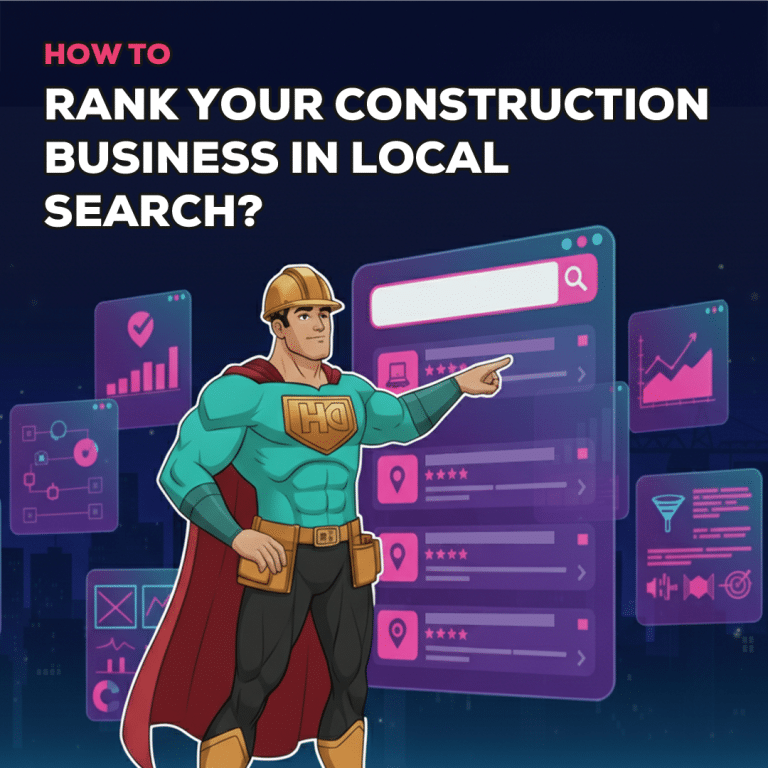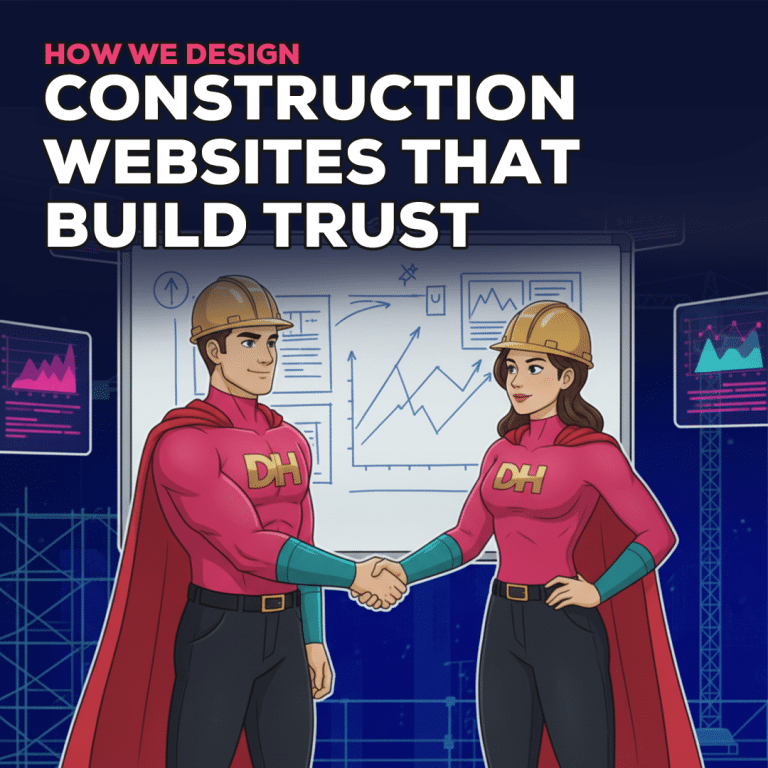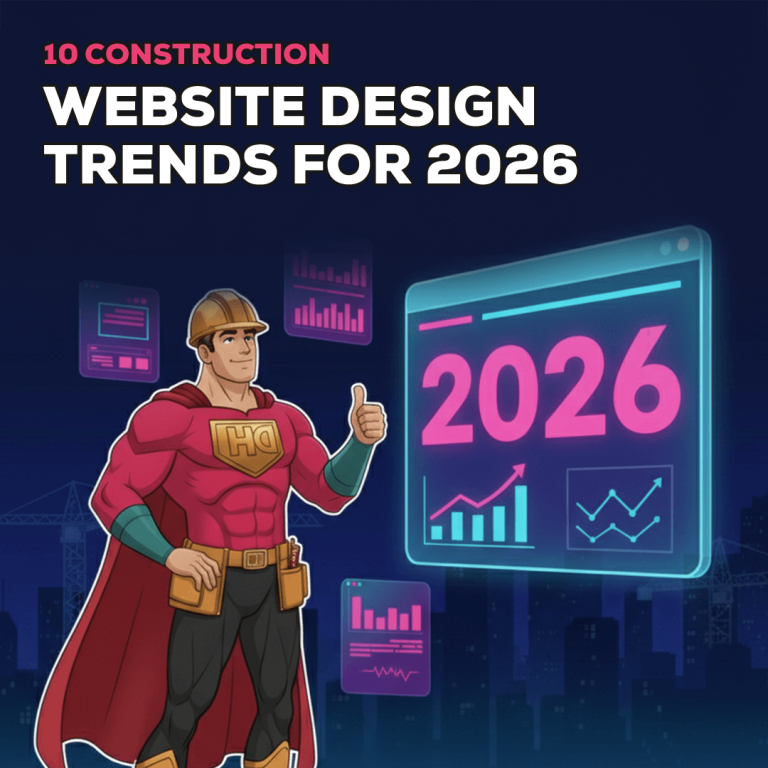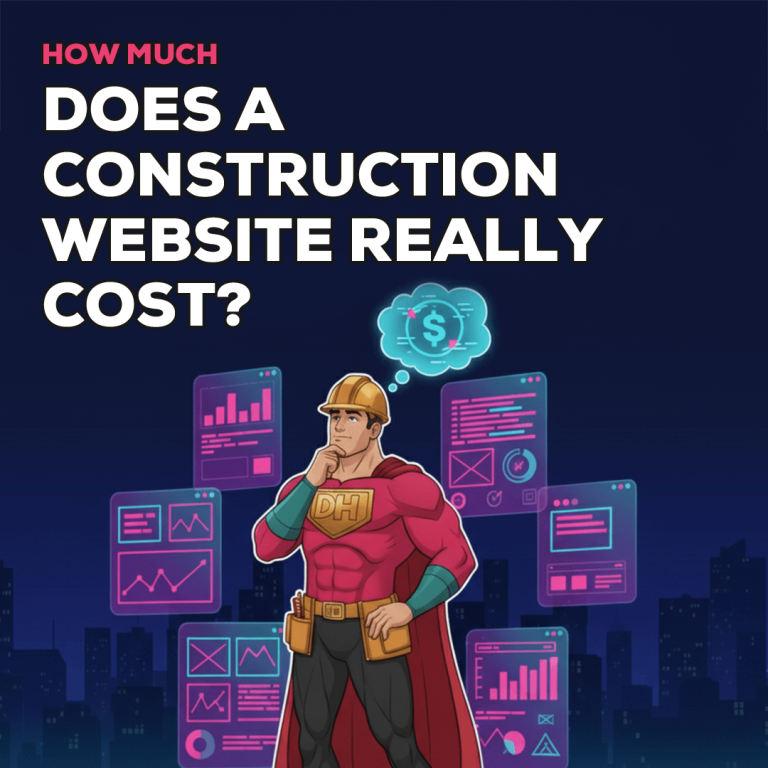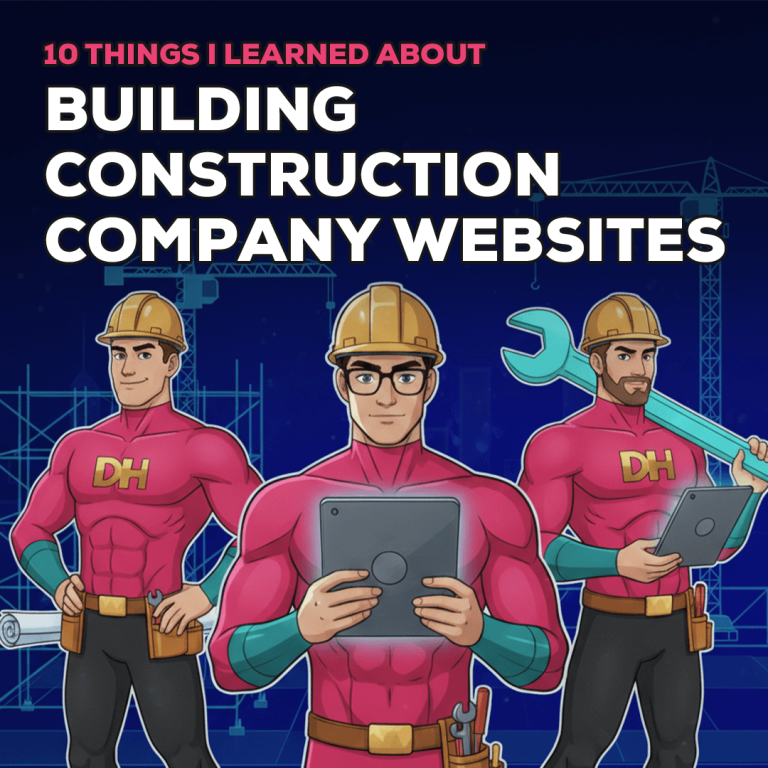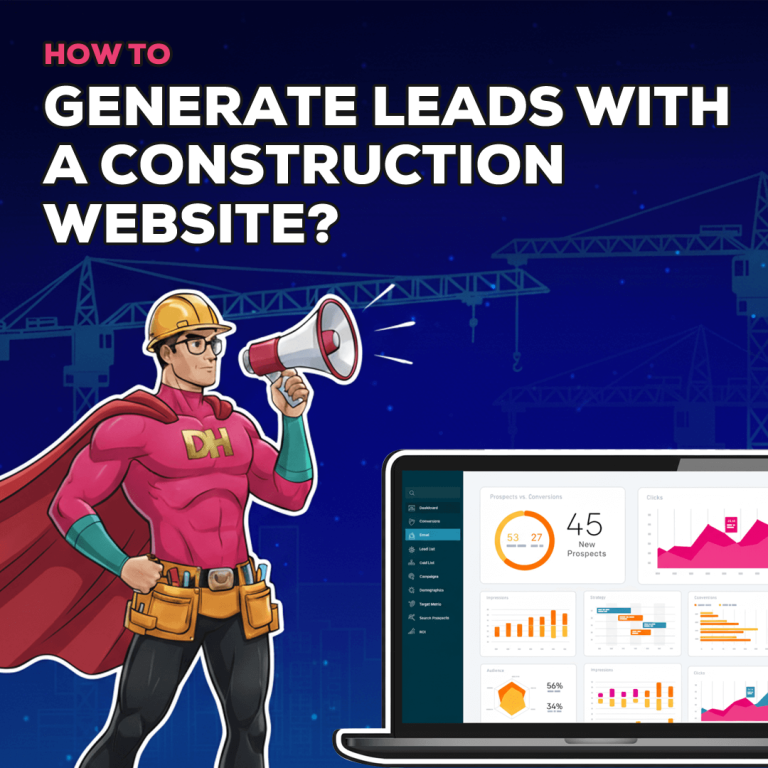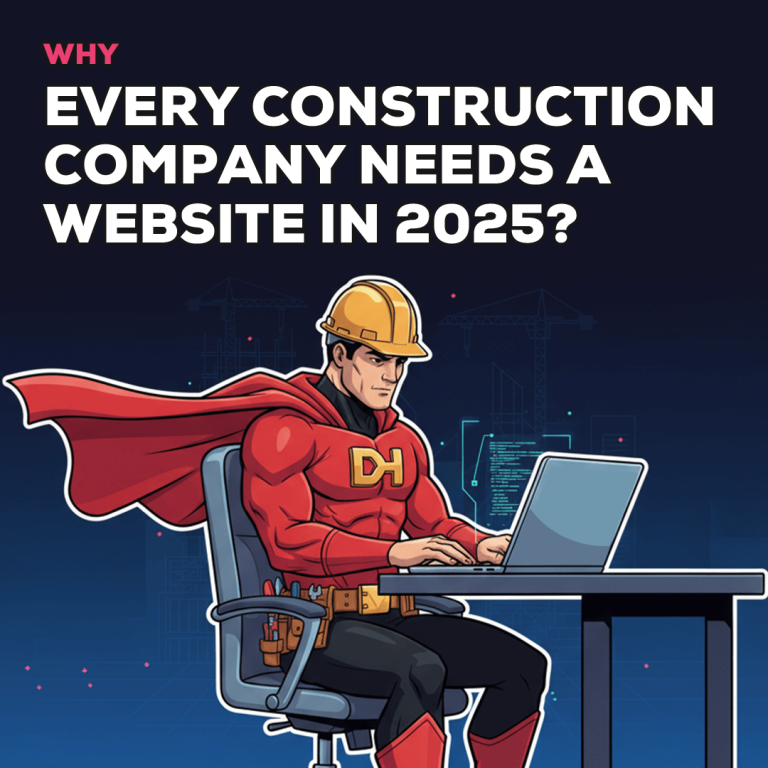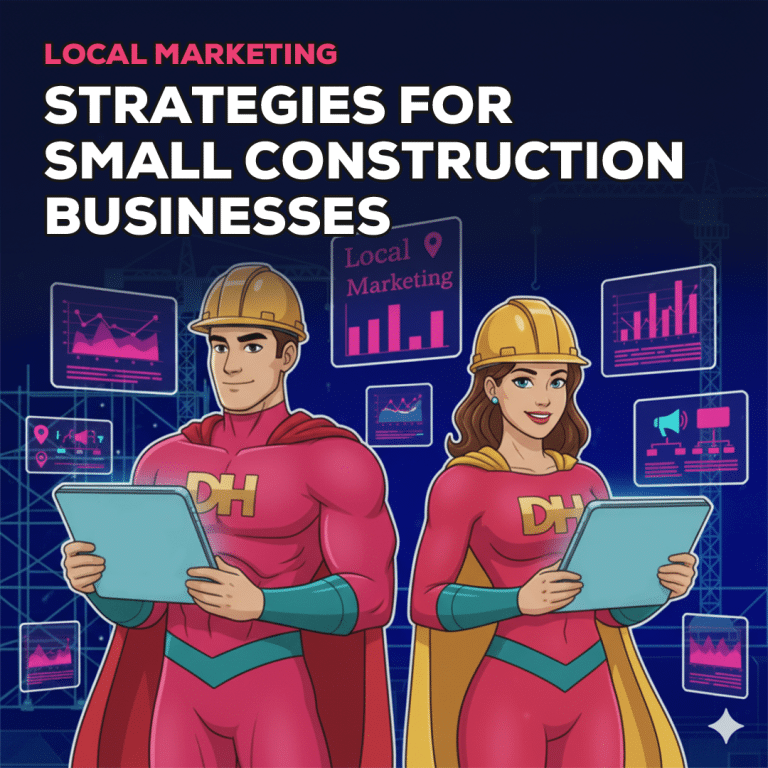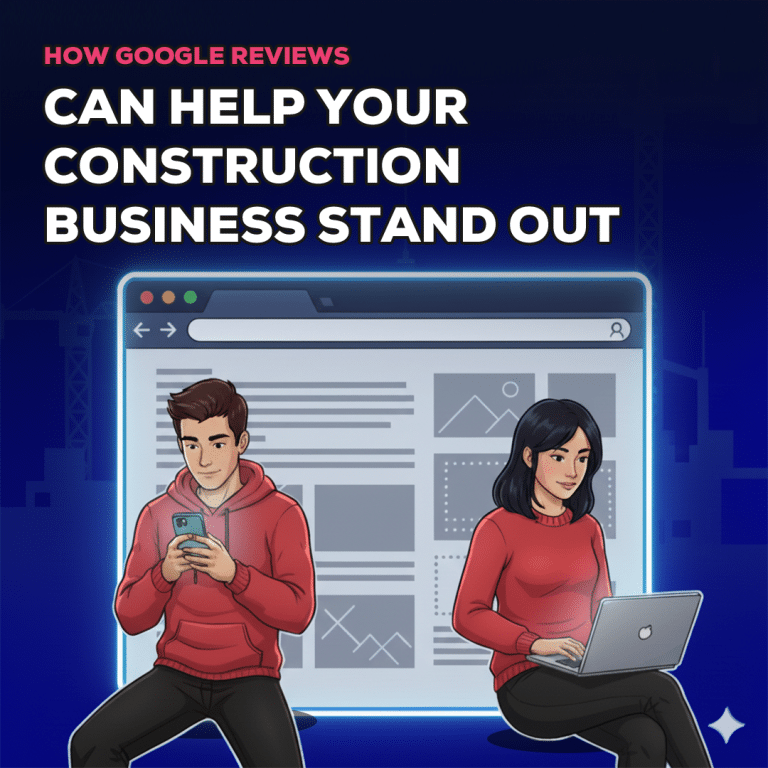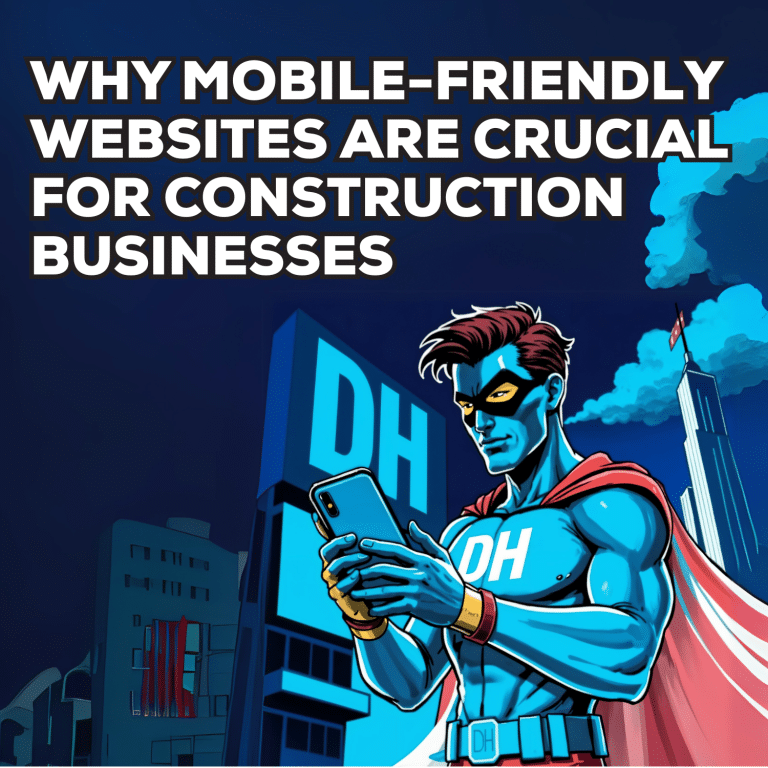Your website is more than just a digital business card, it’s often the first impression a potential client will have of your construction company. In an industry where trust, credibility, and professionalism are everything, that first impression matters. A well-built website can generate leads, showcase your expertise, and help you win more projects. But a poorly built one? It can silently drive prospects away.
Unfortunately, many contractor websites fall short in key areas. Whether it’s an outdated layout, unclear messaging, or mobile usability problems, these issues can create doubt in your visitor’s mind. People might assume your work is as outdated as your website or think you’re too busy to care about the details. That’s not the message you want to send.
And here’s the truth, it doesn’t take much to lose a potential job online. A slow-loading homepage, missing contact details, or confusing navigation can be all it takes to push someone toward a competitor who looks more polished and professional.
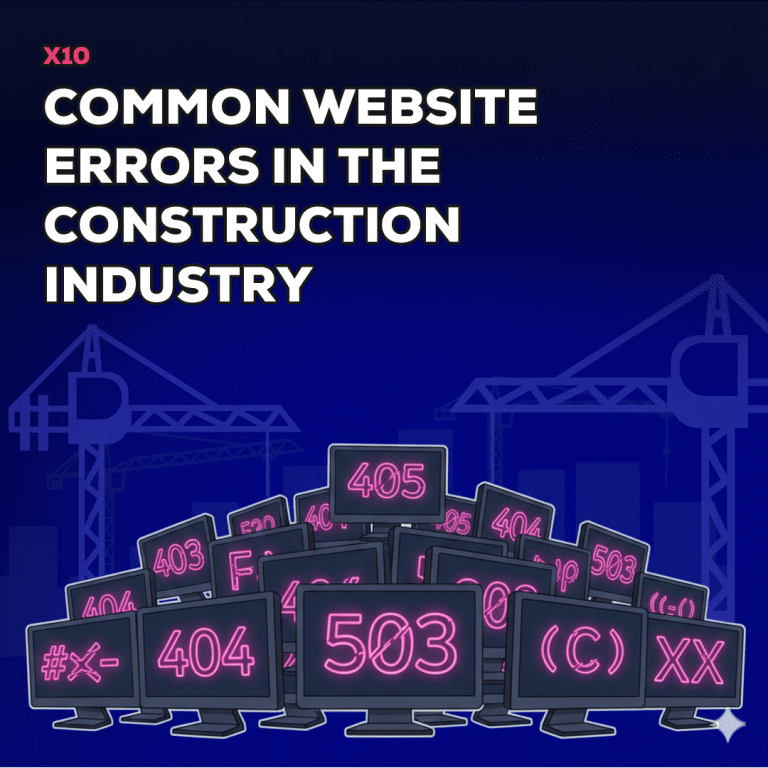
In this guide, we’ll walk through ten of the construction industry website mistakes, and show you exactly how to fix them. We’ll break down technical errors, UX missteps, and missed SEO opportunities that might be costing you leads. Whether you’re a solo contractor or run a growing team, this list will help you turn your website into a tool that works for your business, day and night.
Get ready to discover what might be holding your website back, and how small changes can make a big difference.
1. Slow Load Times
Why It’s a Problem
In today’s world, speed matters. A delay of even one second in page load time can cause a 7% reduction in conversions. For construction companies, where clients are researching several service providers at once, a slow website is enough reason to move on to the next competitor.
This problem is more than just annoying; it’s a business killer. Visitors will likely never return, and worse, they may associate your poor website performance with poor service.
What Causes It
- Unoptimized images: Uploading high-resolution photos without compression slows down pages.
- Cheap hosting: Basic hosting services often lack the server resources needed to handle media-heavy construction websites
- Bloated code and plugins: Too many unnecessary scripts and outdated plugins create bottlenecks.
- No caching: Pages load from scratch every time, increasing load times.
- No CDN usage: A content delivery network is crucial for global reach and local loading speed.
How to Fix It
- Compress images before uploading using tools like TinyPNG or ShortPixel.
- Choose a high-performance hosting provider like SiteGround, WP Engine, or Kinsta.
- Remove unnecessary plugins and streamline scripts.
- Implement browser caching and use a CDN like Cloudflare.
- Minify CSS, JavaScript, and HTML.
Your site should load in under 3 seconds. Anything slower, and you’re losing potential clients.
2. Lack of Clear Calls to Action (CTAs)
Why It’s a Problem
Your website might have a sleek design and stunning project photos, but if it doesn’t guide visitors to take action, it’s missing its most important job. A Call to Action (CTA) is the prompt that turns visitors into leads. It’s your digital handshake, the invitation to get in touch, request a quote, or book a consultation.
When CTAs are missing, unclear, or ineffective, users don’t know what to do next. That hesitation leads to bounces, abandoned visits, and missed opportunities. In a competitive industry like construction, where decisions are based on confidence and convenience, even a small gap in your CTA strategy can lead to lost jobs.
Common CTA Mistakes
- Generic buttons like “Click Here” or “Learn More” fail to communicate value or urgency.
- Low visibility, such as placing CTAs only at the bottom of pages or burying them in the navigation, reduces engagement.
- No benefit statement, meaning the user doesn’t understand what they’re getting in return.
- Too many CTAs on one page can overwhelm visitors and create decision paralysis.
How to Fix It
- Use action-oriented, benefit-driven CTAs like “Get a Free Estimate,” “Schedule a Consultation,” or “View Our Work.” These communicate value clearly.
- Place CTAs strategically like above the fold, in sticky headers, sidebars, or at the end of service pages and blog posts.
- Test different versions of your CTA text, color, and placement using A/B testing to find what resonates with your audience.
- Make sure buttons are large, high-contrast, and mobile-friendly so users can easily tap them on any device.
- Stick to one primary CTA per page to avoid confusion and keep the focus clear.
A well-designed CTA doesn’t just look good, it works. Studies show that a strong CTA can boost conversion rates by over 200%. For a construction company, that could mean the difference between a filled schedule and empty inbox. Make it easy for visitors to take the next step. Don’t leave them wondering what to do.
3. Poor Mobile Experience
Why It’s a Problem
More than 65% of users now browse contractor websites from their smartphones or tablets. For busy homeowners or commercial clients, mobile is the first and often only touchpoint they have with your brand. If your site doesn’t perform well on smaller screens, you’re likely losing more than half your potential leads before they even read about your services.
A frustrating mobile experience leads to high bounce rates, low engagement, and missed conversions. Even worse, with Google’s mobile-first indexing, your website’s mobile performance affects your visibility in search rankings. A poorly optimized mobile site can drop several positions in local search results, making it harder for new clients to find you online.
In an industry where trust and convenience are key, your website must be usable, fast, and functional on mobile devices.
Common Mobile UX Issues
- Tiny fonts that are hard to read on small screens.
- Buttons that are too small to tap comfortably with a thumb.
- Forms that don’t resize properly or fail to support autofill.
- Navigation menus that are hidden, overly complex, or hard to open.
- Images and layout sections that overlap or break the page design.
- Popups that cover content and are difficult to close on mobile.
These small frustrations add up quickly and send users elsewhere, often to your competitors.
How to Fix It
- Build or update your site using a responsive design framework that automatically adapts to screen size and orientation.
- Use larger fonts and generous button padding to ensure easy tapping and reading.
- Simplify your mobile navigation by limiting menu items and using expandable menus or sticky headers.
- Test your website on actual devices, not just browser emulators. Browse on both iOS and Android to spot layout issues or broken features.
- Remove or minimize intrusive popups, especially those that violate Google’s mobile usability standards.
- Run your site through Google’s Mobile-Friendly Test and PageSpeed Insights to uncover mobile-specific issues and receive tailored improvement suggestions.
Your mobile website experience plays a critical role in how your construction business is perceived and how well it converts traffic into leads. A clean, intuitive, and responsive mobile site helps potential clients find information quickly, view your projects, and contact you without friction. In today’s mobile-first world, that experience can make the difference between getting the job, or losing it.
4. Weak SEO Structure
Why It’s a Problem
A beautifully designed website is worthless if no one can find it. Search Engine Optimization (SEO) ensures your site ranks for relevant searches like “roofing contractor in Manchester” or “web designers in Glasgow“.
Without SEO, your website is invisible to the people who need your services most.
Common SEO Mistakes for Builders
- No meta tags: Pages without unique titles and descriptions confuse search engines.
- No headings: Missing H1 or H2 tags make content hard to read and rank.
- No location keywords: Local search queries are left out.
- Duplicate content: Using boilerplate service descriptions hurts SEO.
- No alt text for images: Images without descriptions don’t help with visibility.
How to Fix It
- Write unique meta titles and descriptions for every page.
- Structure pages with H1 (title), H2 (subsections), and H3 (details) tags.
- Incorporate local keywords naturally within the content.
- Create original content for each service and location page.
- Add internal linking between related pages to improve crawlability.
- Use schema markup for services and reviews.
A well-optimized website helps you appear in local searches, improving both visibility and credibility.
5. No Trust Signals
Why It’s a Problem
In the construction industry, trust is everything. Whether you’re bidding on a home renovation or a commercial build-out, potential clients want to know they’re hiring someone reliable, experienced, and legitimate. Before they ever call, message, or schedule a site visit, your website must answer a silent question in their minds: “Can I trust this company to do the job right?”
If your website doesn’t display visible trust indicators, you’re missing a critical opportunity to build confidence. And in a competitive market, people are more likely to choose a company that proactively proves its credibility over one that simply lists services.
Without trust signals, even a well-designed website can feel cold or impersonal. Prospects may hesitate to reach out, or worse, leave your site and choose a competitor that appears more established.
What’s Commonly Missing
- Client testimonials or video reviews
- Before-and-after project galleries showing real results
- Certifications, licenses, and insurance badges
- High-quality photography of real projects and staff
- Social proof through embedded reviews from Google, Trustpilot, or Houzz
- Affiliations with industry organizations or local trade associations
These elements reassure visitors that your business is active, professional, and experienced.
How to Fix It
- Embed Google or Yelp reviews directly on your homepage or service pages.
- Add a “Why Choose Us” section that highlights your team’s experience, certifications, and safety training.
- Create case studies that outline specific project challenges, how you solved them, and the results you delivered.
- Use authentic project photos taken on real job sites. Avoid stock images whenever possible.
- Feature logos or badges of associations like the BBB, local builders’ guilds, or chambers of commerce.
Even a single well-placed testimonial or trust badge can increase your conversion rate by up to 30%. These elements reduce hesitation and build a stronger emotional connection with potential clients.
Trust signals are not just optional extras, they’re conversion drivers. They turn cold traffic into warm leads by showing prospects that others have trusted you before and that you deliver on your promises. For construction businesses, where projects are often high-value and long-term, credibility is the foundation of every deal.
If you haven’t updated your trust elements lately, now is the time to build them into your site’s core structure.
6. Outdated or Inconsistent Branding
Why It’s a Problem
If your website feels like a relic from the early 2000s, users may assume your services are too. Outdated branding can erode trust and confuse customers.
- Branding Mistakes to Watch
- Multiple logo versions or color schemes
- Inconsistent messaging across pages
- Old taglines that no longer reflect your mission
- Mismatched typography and image styles
How to Fix It
- Develop brand guidelines: fonts, colors, voice, tone, logo usage.
- Refresh your value proposition to highlight modern strengths.
- Use consistent visual design elements across every page.
- Audit old pages for outdated logos or taglines and update accordingly.
Strong branding builds familiarity and positions your company as a professional, long-term partner.
7. No Analytics or Tracking
Why It’s a Problem
In construction, you wouldn’t start a job without measuring the space or reviewing blueprints. The same logic applies to your website. If you’re not tracking what’s happening on your site, you’re making decisions based on guesswork. Without data, you don’t know what’s working, what’s broken, or where opportunities are being lost.
Analytics allow you to measure performance, identify bottlenecks, and continuously improve your website’s ability to generate leads. From page visits to button clicks, understanding how users interact with your content is key to turning casual visitors into real clients.
Many construction businesses invest in a website and then leave it untouched, unaware of how much traffic they’re getting, or why that traffic isn’t converting. That’s like leaving your job site unattended and hoping everything works out.
Common Gaps in Tracking
- No Google Analytics installed to monitor traffic and engagement.
- No conversion tracking for form submissions, quote requests, or click-to-call actions.
- No heatmaps or session recordings to visualize where users are clicking, scrolling, or exiting.
These are fundamental tools that provide insight into how users experience your website.
How to Fix It
- Set up Google Analytics 4 (GA4) to track website traffic, engagement time, and user flow.
- Connect Google Search Console to monitor how your site appears in search results and identify SEO issues.
- Set up event tracking for key actions like form submissions, call button clicks, and brochure downloads.
- Use tools like Hotjar or Microsoft Clarity to generate heatmaps and session recordings for visual insight into user behavior.
- Review your data monthly to spot trends, drop-offs, and high-performing content.
- Identify and fix underperforming pages by analyzing bounce rates, time on page, and conversion paths.
If you’re not measuring your website’s performance, you’re missing out on valuable insight that could directly lead to more business. Analytics tools are free, easy to install, and essential for making smart, data-driven decisions. By tracking how people interact with your site, you can identify what drives leads, and fix what’s pushing them away.
For construction companies competing in a local market, even small optimizations based on solid data can lead to better results, stronger ROI, and a busier calendar.
8. Broken Forms and Links
Why It’s a Problem
You’d be surprised how many contractor sites have contact forms that don’t work or links that lead nowhere. This erodes trust and frustrates users.
Typical Causes
- Plugin or CMS updates breaking functionality
- Copy-paste errors when duplicating pages
- Neglected maintenance on older content
How to Fix It
- Test all forms regularly (monthly or after major updates)
- Use plugins with built-in error logging
- Run link checks with tools like Screaming Frog or Ahrefs
- Set up custom 404 pages to catch bad links gracefully
An easy-to-use, bug-free website encourages visitors to take that next step.
9. Not Enough Content
Why It’s a Problem
Thin content doesn’t build trust, and it won’t rank in Google. Visitors want answers, explanations, and proof, not vague marketing statements.
Signs of Inadequate Content
- Homepages with less than 200 words
- Generic service pages lacking detail
- No blog or educational content
- No FAQs or buyer guides
How to Fix It
- Write 500+ word service pages for each offering
- Create an FAQ section answering common client concerns
- Launch a blog sharing tips, trends, and completed projects
- Offer downloadable guides for complex services like loft conversions or extensions
More content gives visitors more reasons to trust you, and search engines more reasons to rank you.
10. Lack of Local Optimization
Why It’s a Problem
Most construction companies serve a specific geographic area. If your site isn’t optimized for your region, Google won’t know who you serve, and neither will potential clients.
Local SEO Mistakes
- No mention of cities or regions served
- Missing Google Maps or contact info
- No location-specific service pages
- No citations or business directory listings
How to Fix It
- Include city names in headings and copy (e.g., “Driveway Paving in Glasgow“)
- Add a Google Map embed on your contact page
- Create location pages for each major service area
- Submit your business to local directories like Yell, TrustATrader, or Checkatrade
Local SEO is critical for appearing in “near me” searches, and that’s how most construction customers search.
Your construction website might be costing you clients. We’ll help you fix it.
Want to make sure your website isn’t costing you leads?
Get a free website audit from our experts at Design Hero. We’ll show you what’s working, what’s not, and how to fix it.
Our Construction website case studies
Frequently Asked Questions
Common mistakes include slow load times, poor mobile design, unclear CTAs, missing SEO elements, and lack of trust signals like testimonials or certifications.
Start by improving site speed, optimizing for mobile, adding local SEO, and ensuring clear CTAs. A website audit can identify specific issues.
Most users visit contractor websites from mobile devices. If your site isn’t responsive, users may leave without converting.
About the author

Nicholas Robb, Founder
The original Design Hero founder, solopreneur and marketing expert; Nick will help you supercharge your business success with a broad skill-set spanning a range of digital marketing fields.
If you want help growing your business

